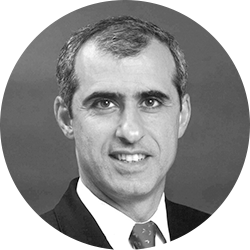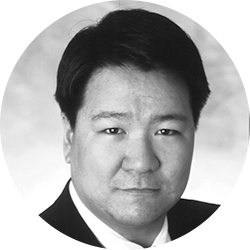• When performing refractive cataract surgery, what are your go-to lenses?
• With the number of available IOLs continuing to grow, how do you select the best option for your patients?
• Do you believe that lens-based procedures are competing with cornea-based refractive correction options?

Quentin B. Allen, MD
• Florida Vision Institute, Stuart, Florida
ActiveFocus IOLs (Alcon) comprise 95% of the lenses that I currently use. In my experience, the high quality and excellent contrast sensitivity of these lenses afford tolerance of an offset with no unexpected visual consequences. The consistency of refractive outcomes with modern cataract surgery allows us to employ lens-based procedures in a larger number of patients. We are absolutely trending toward offering clear-lens procedures to patients as early as their late 40s, where a decade ago that was usually reserved for patients in their late 50s and early 60s.”

Kerry K. Assil, MD
• Assil Eye Institute, Beverly Hills, California; assileye.com
With the great diversity in patient lifestyles, there is no one shoe that fits all. My most frequently used lens is the Tecnis Multifocal IOL +2.75 D (Johnson & Johnson Vision), as it minimizes night glare and halos and offers the best blend of intermediate and near vision. The less a patient uses computers or drives at night, and the more they read printed material, the more likely I am to use the +3.25 D add lenses. The Tecnis Symfony Toric IOL (Johnson & Johnson Vision) works nicely for patients with high degrees of bilateral astigmatism. When it comes to lens- or cornea-based refractive procedures, a pattern has been evolving over the past 10 years: Myopes tend to receive laser corneal refractive surgery, and hyperopes tend to receive refractive lens exchange. This is one of those lucky circumstances where the best technology option and the best surgical tools dovetail nicely in a bimodal fashion.”

Harvey L. Carter, MD
• Carter Eye Center, Dallas
My go-to lenses when performing refractive cataract surgery are the Tecnis monofocal IOL, the Symfony extended depth of focus IOL, and the AcrySof ReStor with ActiveFocus. The biggest factors in selecting the best option for patients are the patient’s lifestyle and hobbies. As far as my opinions about lens- versus cornea-based procedures, I believe that corneal inlays are dead. We should not punish the cornea for the sins of the lens.”

William W. Culbertson IV, MD
• Bascom Palmer Eye Institute, Miami
I look at all cataract surgery as a refractive procedure because optimizing and personalizing the patient’s uncorrected vision is often the most satisfying surgical outcome for the patient. For the majority of cases, I prefer to use the Tecnis line of IOLs. The specific choice depends on the general health of the patient’s eyes and the patient’s activities and hobbies. It is important to explain what the tradeoffs are for each patient so that he or she is not surprised when the outcome is not what was expected. Lens-based procedures tend to be more stable with fewer optical side effects than keratorefractive procedures.”

Brian S. Boxer Wachler, MD
• Boxer Wachler Vision Institute, Beverly Hills, California
My standard go-to IOL is the aspheric Tecnis (Johnson & Johnson Vision) because my nomogram is dialed in and the quality of vision is great. For astigmatism, I use the AcrySof ReStor Toric (Alcon) and rely on the Barrett Toric Calculator for IOL power. Multifocal IOLs still have a greater risk of glare, halos, and reduced contrast sensitivity than monofocal IOLs, so I cautiously recommend these to patients who desire improved uncorrected near vision. I don’t see much competition between lens- and cornea-based procedures. It really depends on the needs of the specific patient.”

Stephen S. Bylsma, MD
• Shepard Eye Center, Santa Maria, California
I believe the Tecnis Multifocal IOL +2.75 D is by far the best multifocal IOL that has received FDA approval. Unfortunately, there is no toric option for this lens, so for cases that have significant corneal cylinder, other options need to be used, such as the Tecnis Symfony or the AcrySof IQ ReStor +2.5 with ActiveFocus. In my practice, lens replacement offers far more benefits to presbyopic candidates than LASIK. The real breakthrough in this regard was the advent of the Tecnis Multifocal IOL +2.75 D, which has allowed patients to seamlessly move to natural uncorrected vision with very little chair time for the surgeon.”

Y. Ralph Chu, MD
• Chu Vision Institute, Bloomington, Minnesota
In my opinion, to be successful as a refractive cataract surgeon today, you have to offer multiple IOL options to patients. In our practice, we offer monofocal, multifocal, extended depth of focus, and accommodating IOLs. The challenge is trying to match the technology to the patient’s needs. We spend a lot of time preoperatively educating our patients about these technologies and learning their needs so we can help them make an IOL decision. I don’t believe lens-based procedures are competing with cornea-based procedures. My view is that to effectively treat the refractive needs of a patient, a surgeon needs to be comfortable offering and performing both types of procedures.”

Michael Greenwood, MD
• Vance Thompson Vision, Fargo, North Dakota
I’ve had good success with many different platforms, but the Johnson & Johnson Vision and Alcon platforms are the two I most commonly use. We are practicing in an exciting time, in that we have access to so many IOLs and can really help patients get the vision that they want after cataract surgery. The key to selecting the proper IOL is understanding the patient’s goals and fitting the right lens to that patient. I also love that there are different add powers in multifocal IOLs, and now extended depth of focus IOLs add another way to provide good intermediate and near vision. I believe lens-based procedures compete with cornea-based procedures in certain populations. For patients in their late 40s or early 50s who are looking to be less dependent on glasses, we have more options available for them.”

Melissa Toyos, MD
• Toyos Clinic, Nashville, Tennessee
We have used many lenses when performing refractive cataract surgery but have seen the most success with the AcrySof IQ ReStor +2.5 with ActiveFocus. It seems to hit the sweet spot for most of our patients with minimal unwanted effects. However, there is still no one-size-fits-all when it comes to IOLs. We try to understand the patient’s needs and preferences and take their ocular situation into account. Lens-based procedures and cornea-based refractive correction options seem to be applicable to two separate patient groups. People have an innate comfort level with LASIK as a procedure that is perceived as less invasive, but presbyopic patients seem to choose lens-based solutions when they understand their options.”

Ming X. Wang, MD
• Wang Vision Institute, Nashville, Tennessee
If a patient has treatable astigmatism and he or she is a monovision candidate, my go-to premium lens is a toric IOL. If a patient desires spectacle independence and is not a monovision candidate, my go-to premium lens is a multifocal or accommodating IOL. Depending on the patient’s lifestyle, we select an IOL that is matched to that patient’s particular need. I believe lens- and cornea-based procedures are actually complementary to each other. For example, if a patient is not a LASIK candidate, we can explore the possibility of an IOL. On the other hand, if a patient wants to avoid the risk of lens surgery and is a LASIK candidate, we may then recommend LASIK.”

Michael Y. Wong, MD
• Wills Eye Hospital, Philadelphia
The lens choices we have today far exceed anything we had just a few years ago. I simplify this by using the Alcon family of IOLs. I match the patient’s needs and desires to the optics that are available, and I build a plan based on the Alcon platform. Provided there are no contraindications, I typically start with the AcrySof IQ ReStor +2.5 D, as this offers the biggest sweet spot for patients. After assessing the outcomes in the first eye, I choose a complementary IOL for the second. For instance, if the patient is happy with their distance vision with the 2.50 D add but feels near vision is weak, I’ll match with the AcrySof IQ ReStor +3.0 D. For presbyopic patients, the best we can achieve with cornea-based laser vision correction is monovision. They are better served by having binocularity with multifocal IOLs for their next 20 to 30 years. I save corneal laser vision correction to touch up refractive surprises.”

Dan B. Tran, MD
• Coastal Vision Medical Group, Long Beach, California
I do not have a go-to lens. I use all of the refractive IOLs available based on my patient’s needs and the condition of his or her eyes. My most frequently used refractive IOL is the AcrySof IQ Toric IOL. For presbyopic corrections, most patients end up with either the low-add Tecnis Multifocal or the Tecnis Symfony Toric. When selecting the right lens for a patient, the following factors come into consideration: a clear understanding of the patient’s needs and an understanding of the benefits and limitations of each IOL. I believe that LASIK is still providing the most accurate and elegant refractive outcomes for good candidates, but the procedure is not for everyone. Lens-based procedures give us more options for presbyopic correction.”

Keith A. Walter, MD, FACS
• Wake Forest Baptist Medical Center, Winston-Salem, North Carolina
My go-to lens strategy is the Tecnis Symfony IOL in the dominant eye and the Tecnis Multifocal +3.25 D in the nondominant. I believe that lens-based procedures only compete with cornea-based procedures in patients who are at least 60 years old. In my opinion, LASIK is still king when it comes to 20- to 50-year-old patients.”

Helen K. Wu, MD
• New England Eye Center, Boston
For refractive cataract surgery, I do not have a single go-to lens. The choice of lens depends on the patient and his or her needs. After a discussion with the patient regarding professional and personal activities, including sports and hobbies, I offer the patient a lens or a choice of lenses. For patients with strong intermediate and distance requirements, I like an extended depth of focus lens such as the Tecnis Symfony or a low-add multifocal lens such as the ActiveFocus. I also like the Crystalens (Bausch + Lomb) for this group, particularly in patients who often drive at night and are sensitive to nighttime aberrations. Monofocal lenses work well in patients who are accustomed to monovision with their contact lenses. I find that I am doing more lens-based procedures as the average age of refractive patients in my practice has increased. However, in young patients, laser vision correction for low hyperopia and mild to moderate myopia, or phakic IOLs for higher corrections, are typically my first choice.”




